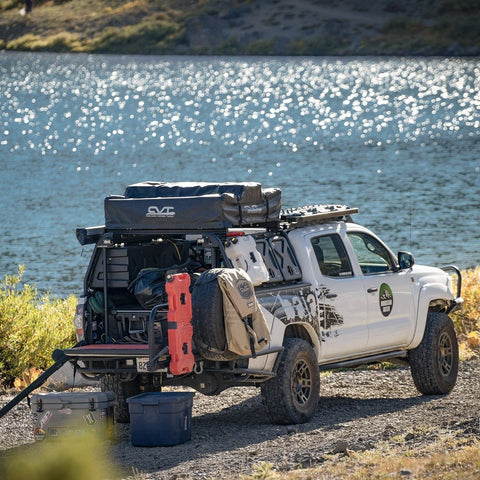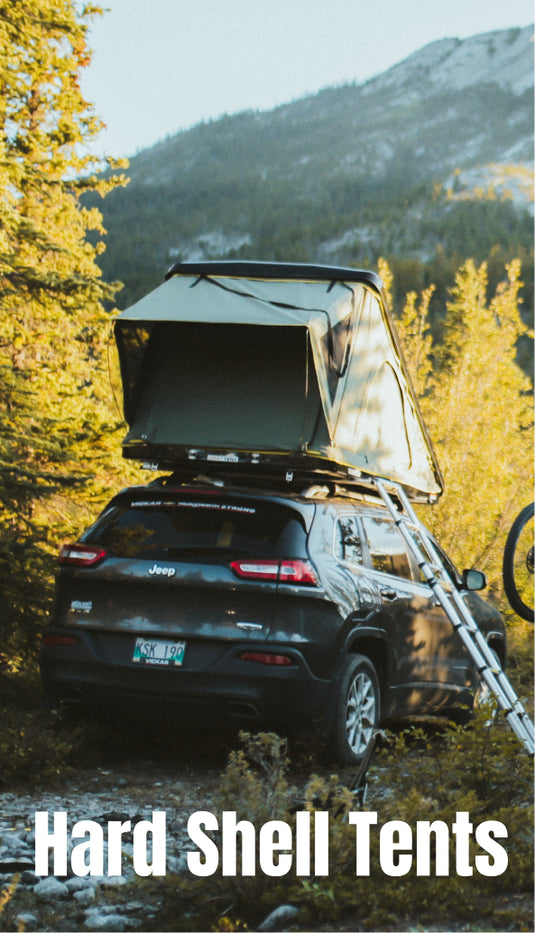An age-old question about roof racks, will they damage my car? In short, no. A car roof rack will not damage your vehicle. Improper use, incorrect installation, and carelessness will, though. Understanding how to use and care for your roof racks will keep them and your vehicle in top condition.
Here, we discuss a few aspects of how the misuse of these handy systems can lead to damage to your car. We will look at how to stop your vehicle from becoming harmed when using these systems. So, let’s dive in!
How To Protect Your Vehicle During A Roof Rack Installation

Finding the best roof rack systems for your car is the best place to start. Manufacturers design these systems to fit with specific car roofs. A set made for a bare roof vehicle will not work with a Jeep that has a roof with a rain gutter. It is vital to figure out which roof style your car has to buy the right roof rack set.
Purchasing the incorrect set and doing a custom installation job can lead to damage. Both your vehicle and your roof rack system may end up broken or scuffed.
Figuring out what you will use your roof racks to transport is the next step. Roof rack systems offer various configurations for carting unique items. The system used for carrying a kayak will differ from that used for a rooftop tent. Attempting to load a specific structure with items it was not intended to bear can lead to disaster.
Finding the ideal racks for your needs will make loading up your luggage a breeze.
Each roof rack system needs its method of installation. The process used depends on their design and on your car’s roof style. There are three ways in which roof racks connect to your vehicle:
Some clamp systems see roof racks attached to your car’s door jamb. We use them most often with bare roof vehicles. Bare roof vehicles come with no points for mounting a roof rack system. Universal roof racks make use of this method of installation. This form of connection also works with vehicles that feature a rain gutter roof style. Although, in this case, the clamps attach to the rain gutter and the door jamb. Cars that come with factory-fitted raised rails work with roof racks that clamp to the rails.
Manufacturers design the clamps to fit individual vehicle models. Always make sure that the set you buy is made for your specific vehicle model. Closing the door on an ill-fitting door jamb clamp will cause damage to your door frame and the rack system.
Reading the installation instructions for the racks makes attaching them straightforward. Correct attachment of the system prevents mishaps that could damage your vehicle.
Some cars, such as SUVs, come with pre-installed mounting points. These points provide a place to which your roof racks will attach. This installation solution requires a little more attention than the clamp systems. But attaching them is reasonably straightforward. You can find the mounting points on the roof of the car. You will find them beneath weather strips or caps, while others mount flush rails to the car. If your vehicle comes with flush rails, you will need to remove these to install your roof rails.
Drilling is where things get tricky. Some cars, mostly bare roof vehicles, need drilling to attach the roof racks. Installation requires that you drill holes into the car’s body to create points to bolt the roof rack to. You must follow the instructions as they are laid out. Making holes in the wrong place will damage your car.
These drilled holes need to be sealed up with silicone too. This seal prevents water from entering your car should it rain. Water damage is two-fold in a vehicle. Not only will it damage the interior of your car, but it will start rust and corrosion on the body of your car. Drilling is one of the great roof rack pros and cons. In one instance, it ensures a firm connection, yet it also requires adapting your car.

Piling your roof racks with luggage and not securing your goods to the racks can spell disaster. Using the roof racks the right way leads to many safe journeys without hassle.
If you were to pile luggage to one side of your roof racks only, you might find it difficult to handle corners. Loading this way could end up in you having an accident and damaging your vehicle.
Goods that you don’t tether to the roof racks securely could come loose while you drive. Traffic rules govern that should items fall from your car while driving. You will be breaking the law. These items that come loose could bounce off the road and hit your vehicle or someone else’s. Not only will this dent or scrape your car, but it could cause a severe motor vehicle accident.
Placing luggage on your car roof without considering the weight capacity is hazardous. Overloading your vehicle may cause structural damage to your car. It could also lead you to lose control of the car should you need to swerve suddenly.
These mountains of bags and other oddly-shaped goods also cause drag. Reducing your car’s aerodynamics increases fuel consumption. It will also increase the amount of power needed to move the vehicle forwards. While this won’t destroy your vehicle, it will put a dent in your fuel budget.
Finding a roof rack system that suits your needs will help reduce these risks. It makes sense to consider using a cargo carrier vs. roof racks when traveling. A cargo carrier allows you to transport a range of smaller items. The carrier's design won't affect the aerodynamics. These are ideal for suitcases or bags, and they will keep your goods protected from the elements.
Roof racks such as the Front Runner Toyota 4runner (5th Gen) 3/4 Slimline II Roof Rack Kit are great for transporting hefty items. They work well in moving things such as surfboards and kayaks. They provide many points to tether these items down.

One of the few roof rack disadvantages is that they need maintenance. This maintenance is only required once a year or after a long trip. Keep your racks in top condition with these simple steps:
- The first step is checking to see that the roof racks are secure. Racks that have come loose can be dangerous. And, you may arrive at your holiday destination with half your items gone.
- Another measure you can take is removing the roof racks to check for areas of rust. They design most of these systems to prevent corrosion, but it is always best to check, anyway.
- Clean the rack system thoroughly. Then, give it a good look-over before reinstalling them.
- Many advise that you should remove unused roof racks and store them. This tip ensures their longevity but is not imperative. Should you leave them attached to your car, they won’t cause any problems or damage.
- If you plan on cleaning your vehicle at a car wash with rollers, it is best to remove your roof racks first. These rollers can become tangled in the roof racks and yank them from your vehicle. If your rack system needs a wash, instead, do it at home.
In Conclusion
It is simple to see that roof racks, like any other gadget, won’t cause any harm unless misused. It is not the racks themselves but human error that leads to damage to your vehicle. Follow the instruction manual and pack your luggage on the racks securely. By doing this you can enjoy many safe trips with no damage.
There is nothing to having a set of roof racks, and they make life easier. If a roof rack system appeals to you, look at the vast range of quality racks we have available.

